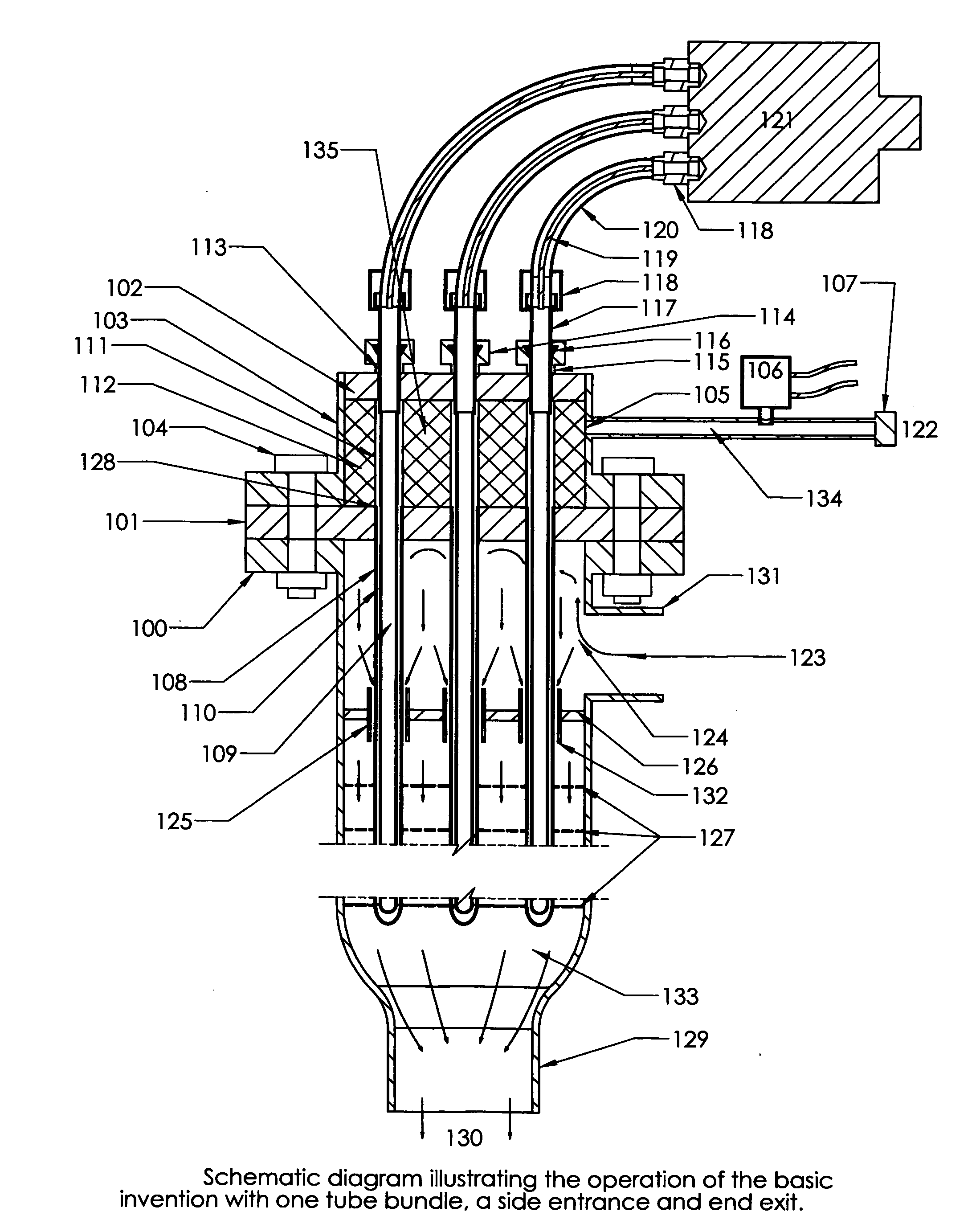Dual wall axial flow electric heater for leak sensitive applications
a technology of leakage and electric heater, which is applied in the direction of liquid transfer devices, lighting and heating equipment, and immersion heating arrangements, etc., can solve the problems of increased risk of leakage, limited use, and increased probability of leakage, so as to reduce the risk of leakage, improve safety, and low cost of ownership
- Summary
- Abstract
- Description
- Claims
- Application Information
AI Technical Summary
Benefits of technology
Problems solved by technology
Method used
Image
Examples
Embodiment Construction
[0046]While a descriptions of a preferred embodiment is provided herein, it is to be understood that the present invention may be embodied in various forms. Therefore, specific details disclosed herein are not to be interpreted as limiting, but rather as a basis for the claims and as a representative basis for teaching one skilled in the art to employ the present invention in virtually any appropriately detailed system, structure or manner.
[0047]FIG. 1 is a schematic diagram of the concept of the basic embodiment of the invention. The upper portion includes a dual tube sheet arrangement similar to dual tube sheets used in conventional shell and tube heat exchangers. To avoid cross-contamination between the heat exchange fluid and the fluid being heated, since there is only one fluid being heated, the tube sheets constitute the top of the dual wall. The secondary protection consists of the plenum 135 between the primary tube sheet 101, which is connected to the secondary tube sheet 1...
PUM
 Login to View More
Login to View More Abstract
Description
Claims
Application Information
 Login to View More
Login to View More - R&D
- Intellectual Property
- Life Sciences
- Materials
- Tech Scout
- Unparalleled Data Quality
- Higher Quality Content
- 60% Fewer Hallucinations
Browse by: Latest US Patents, China's latest patents, Technical Efficacy Thesaurus, Application Domain, Technology Topic, Popular Technical Reports.
© 2025 PatSnap. All rights reserved.Legal|Privacy policy|Modern Slavery Act Transparency Statement|Sitemap|About US| Contact US: help@patsnap.com



